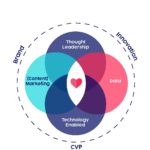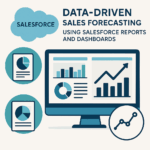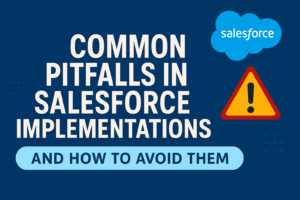BLOG
Defining ROI for Content Marketing with Matt Allison
This week we’re joined in the studio by Matt Allison, former Head of Global Content Strategy at Bupa. We talk about the future of content marketing in Australia, how to prove the return on investment content delivers and why no strategy should launch without real customer feedback.
In This Episode:
-
Matt’s career to date—including the Bupa Blue Room
-
Common mistakes made by content marketers
-
How to align content marketing with business goals
-
The value of face-to-face customer research
Listen to the full episode in Spotify or iTunes. Or if you prefer to read along, stay right here.
Transcript
Michael Bird
Welcome to the Social Garden podcast. It’s Mike Bird here, CEO of Social Garden. I’m with the awesome Matt Allison, former Global Head of Content for Bupa. Welcome, my friend.
Matt Allison
Great to be here.
Mike
You’ve had a pretty impressive career in the content marketing space. Obviously the profession hasn’t been around for a ton of time, so you’re as experienced as they come. Certainly from what you’ve achieved at Bupa, we’re delighted to have you share your experiences and views on what the future of the market looks like from a content perspective and how brands can drive return on investment.
Matt
Yeah, awesome.
Mike
Do you want to give us a summary of what you’ve been up to to date and some of the lessons you’ve learnt along the way?
Matt
I think I’ve had a really non-linear career to move into marketing. So I started off in journalism. I moved into corporate affairs, which was a lot focused on issues management and the like. Then I started to really understand and get interested in social media about 7 years ago.
Primarily it was from an issues and crisis management perspective and I think that’s what really started my journey to move into the content marketing space. It’s the aggregation of all those skills and experiences; I was innately focused on storytelling and newsworthiness.
So then to apply that from a marketing perspective, you’re looking at “How do we try and develop a visceral connection through storytelling with an audience? And use marketing levers to better engage?” While it’s not linear, it’s that whole experience that has set me up for content marketing.
Mike
Interesting. I got into social media marketing also about 7 years ago and our first crack at it was when we were writing code to do hacky things on Facebook, where we could invite hundreds of thousands of people to our events. We saw it right from the get go as a way to drive direct response.
That’s why I found our conversation the other day fascinating, in the sense that you were able to see the opportunity from a storytelling perspective right from the get go, where only in the last 18-24 months we’ve really looked at the content and storytelling side.
Matt
It’s so interesting to me. It’s putting the customer at the centre of what you do and I think that’s the benefit for me of coming from a PR and journalism background. Your whole role is “How do you craft a narrative or a story that’s going to resonate with people?”
That’s where marketing is moving to and that’s why content marketing is so big now. It’s around, “How do we develop more meaningful relationships with customers?” As opposed to just yell at them about product and price.
Mike
Certainly, my initial perception of content marketing was that it was a way to get ranking in the search engines. We didn’t really think about it and we used social for direct response.
We were so focused on that last-click attribution piece from a lead generation perspective. But as we’ve spoken about, there’s so much value in building relationships with brand and storytelling.
Everyone was rushing into content. Now some people say there’s not a clear return on investment from content marketing, which I disagree with and I’ve seen the return on investment for some of our clients.
What’s your view on that? How do marketing leaders explain to other people that they’re working with and demonstrate that return on investment?
Matt
For me, it’s getting the strategy right from the start. When I say content, it’s all encompassing – so it’s search, social, other distribution channels and data. I use content as a catchall. It’s having the content strategy directly aligned to the business strategy.
Sometimes I query if that’s being done. There are instances of brand publishing which is fantastic, but I ask, “How does it relate to the business strategy?” It’s deeper than just “How are they driving leads?” It’s “How is it changing perceptions? What’s the end point? Are we meant to get them to click somewhere?” From a customer perspective, it’s what they need to do.
Mike
And what part of the journey is the content supporting to get to that business outcome?
Matt
Exactly. Then it’s looking at your content marketing and mapping it to a customer journey, it doesn’t always have to point to sales.
The difference for me is that content marketing drives a specific next step, as opposed to brand publishing where people are just engaging with the content. Certainly, that has a place. But it’s an element of content marketing, it is not the strategy.
When you go back to your original question, how do you demonstrate ROI? It’s looking at what you’re trying to achieve. Is it vanity metrics, a net promoter score or driving brand love? You can quantify these because they have direct financial outcomes. And then tailor the content, whether it’s a download or an email.
Just be really clear before you start producing content on what you want the content to do and what that next step is for a customer.
Mike
It’s so true.
Matt
It’s also taking it a step further. You can see whether it’s through behavioural data or other, what is it people are really interested in? And then how do you start to tailor or re-badge products and services that are more directly relevant to that audience?
Mike
We look at our internal content strategy and one of the most popular blog posts is an article on How to Advertise on Weibo. We’re looking at rolling out a product relating to Weibo as a result of the performance of that article.
To put into context, that article receives 800+ unique visitors a month. It’s a piece of content that we don’t have a service for but provide that top of funnel information that people are searching for.
I think there’s a great opportunity when you couple the analytics piece with the content piece to identify and test new value propositions for the audience that you’ve currently got engaged.
Matt
It’s super smart and it all goes back to the customer. You’re using content to test and validate the assumptions of what they will or won’t be interested in and then ask, “Now how do we package something up specifically that we know our customers have a need for?”
It’s that relentless focus on the customer and then providing utility content that actually leads to the sale, rather than just yelling about price and product.
Mike
Yeah, totally. We often see people either invest too much money into their content and not enough in the distribution or they produce really crap content and just try to flog the hell out of it from a distribution perspective.
What’s your view from an integration perspective, linking up different parts around the content to deliver that return on investment?
Matt
It’s my take on the future of content and it’s broader than content. It’s what I call a customer-led ecosystem. Imagine a venn diagram with four circles; at the top you’ve got thought leadership, then marketing, automate and data.
Where the intersection is at the middle, that’s how you win. If that ecosystem is a body, then content is the blood, it powers the entire ecosystem. Through whatever distribution, channel or experience, the content must be incredible. Content is a lever within the bigger journey and ecosystem.
Mike
Awesome. For people who are looking for more information, what is the name of your consulting firm and where can people go to find out more?
Matt
It’s Ubiquity Lab. I’ve had so many people ask, “Why Ubiquity?” It comes back to this customer led ecosystem. The experience has to be ubiquitous, it needs to be like air in terms of how we engage. So the company is Ubiquity Lab and the website.
Mike
Obviously with Bupa there is a huge amount of content produced, the hub is super killer. How did you get that program to ROI, measure it and then tell that story internally to continue to drive investment?
Matt
The ROI question is a great one but you almost need to take a step back. Bupa was re-launching and re-branding in Australia as the largest private health insurer, but we’re also the largest private aged care provider, optical network, dental network, we do medical visas. The challenge that we had as a brand was that we were best known as a health insurer.
We wanted people to love Bupa and we took this novel step of actually asking customers and in short they said, “Look, can’t love a health insurer.” Once we were able to talk about all of this other stuff that we do they said, “Well we could love you.” So the question become, “How do we reposition the brand so that we can articulate the breadth of services?”
Our hypothesis was that it would drive love and stickiness acquisition. This is when I go back to the need for a leadership position or content strategy that’s directly aligned to business goals. And that’s how we solved it. It was a customer and business play.
Mike
And a retention plan in a way, right?
Matt
You’re spot on. For us, content marketing was the first cab off the rank. A lot of the content marketing research we did meant that our brand positioning was directly tied to ROI. We validated that when we launched the Blue Room, we were the second major corporate in the B2C space.
So there weren’t Australian case studies but we just knew that in the traditional media landscape costs were going up and return on investment was going down. So we had to find a new way to engage with people more meaningfully.
For me, it’s competing on the why rather than the what and the how. That’s what our brand positioning and thought leadership strategy was. With content marketing, the Blue Room and everything sitting underneath it as the front line for how we were able to engage.
Mike
With the proliferation of comparison sites, there would have been a real commoditisation of a lot of these insurance based products. I like the idea of working out, “What does the brand mean to people?” And building a tribe around that where it’s more than having $5 off your premium a month. It’s things like, “Well we’re helping kids.” It’s being focused more on helping the community than helping themselves.
Matt
You’re spot on, this is something that’s equally relevant. Instead of trying to compete solely on price, which is a race to the bottom with no emotional connection, it’s “How do you develop a long term relationship with somebody and nurture them? How do you retain them? How do you provide utility and actually help them to live a better life or better use your service? How do you create an environment where you’re able to nurture that relationship?”
Mike
It’s interesting. You guys did a great job of that by the way. We’re learning more about that at Social Garden. The reason people work with us is because we fundamentally agree with our clients on where marketing’s going. It’s as much about building these data-driven ecosystems as it is us agreeing from the get-go on where the ball’s going.
It’s a lot easier this way to go along for the ride together and remove some of the small strategic disagreements that hold back agency-client relationships.
Matt
You guys do that really well, I’ve seen that through a number of campaigns. You bring up a really interesting point for me and that’s data. When I look at content marketing, there’s an approach we took with the Blue Room that I’ve seen a number of companies do well.
We do not have ads the entire way through the site because it’s around trust, credibility and the customer experience. Where it’s relevant, we enable click-throughs to products or services, but it’s what I call utility-driven advertising.
Mike
It’s native to the experience, rather than dirty, big banner ads.
Matt
Exactly. I can’t remember the last time I clicked on a banner ad.
Mike
We’re actually running a campaign at the moment, I’m thinking we’re probably going to get some heat for it. It’s Things You’re More Likely to Do than Click on a Banner Ad. Believe it or not, you’re more likely to be born with eleven toes than have your banner ad clicked on. It’s asking, “What’s the role?” The key to driving conversion is really driving the utility of what you’re talking about.
Matt
For me, it’s interruptive versus immersive. A banner ad is interruptive. So how do you produce something that is immersive and people want to click on because it makes sense for them to do so. And this content does need to be personalised, which is where the data play is interesting.
This is one of the main ways you can start to monetise. Not by ruining your site with ads but asking, “How do I leverage this data to feed it into the broader marketing machine?” Whether that enables you to lead score through ads, re-target or build bigger audience pools. That’s the real goal in content marketing, not click-throughs and gated content necessarily.
Mike
We’re so bullish on social generally because of the ability to predict what is going to be of utility to someone in the future. This is one of the most powerful parts of driving growth in marketing. The more you know from a data perspective about an audience, the more you can predict what is going to be of utility to that person if they receive an ad.
Matt
This goes back to the initial question of brand publishing versus content marketing. The next step is, “How do we capture the data and drive that?” Social plays a critical role in that distribution ecosystem. Jay Baer has a quote “Content is fire and social is gasoline.” I love Jay but I’d change that slightly to “Content is fire and distribution is gasoline.”
Mike
The channel through which people receive content is almost irrelevant. It’s more about, “Is that content a utility for someone?” And whether that can be delivered through social or what we do a lot more of; automation.
So when a lead is generated, knowing “What is the helpful content that person needs to receive if they’re at the beginning of an education journey, a property journey or an automotive journey?” And then predicting what will be helpful for them next so that the following communication is always gonna to be useful – not something that’s annoying. It always comes back to utility.
Matt
It’s a really smart way to do it and a good place to start. Yes, automised your content but also integrate your content across paid and unpaid channels. You could distribute through eDM, a bot or social. There are so many different ways but it’s around, “How are we engaging with customers and bringing them back onside?” That’s key.
Mike
Awesome. What’s your one tip for people embarking on the content marketing journey? What’s something you wish you’d known before starting the Blue Room?
Matt
The biggest tip for me is to really dig under the hood of customer needs. This is the 32nd version of how we got to the Blue Room. We looked at the competitor landscape, the search opportunity, the competitors and overlaid that against business goals and services.
But the output was when we landed on the content strategy and sat down with real customers to validate this. And our strategy evolved. We had customers saying to us, “Look that makes sense” or “I wouldn’t look at that in my journey, I’d be going here.” It was invaluable. I would never undertake a content marketing major program or platform again without getting that real customer insight.
You get some real gold. As an example, a lot of the content for people over 60 I find condescending. They’re at a stage in their life now that their kids have moved out of home and typically have paid off their mortgage. Now it’s around, “How do I have the best life possible?” “We want to be healthy” and “We want to run around with the grandkids.” A lot of the content didn’t reflect that. A key pillar we had was caring which was around helping people stay in their home for longer and then if they need to transition to aged care, we can help them.
Because the target audience there was the same 60 year olds for a lot of that content, I thought it made sense to potentially have that content together. This comes back to the customer research. When we actually spoke to customers, the journey to put somebody into an aged care facility versus them thinking about how to lose weight and kick the footy with their grandkids, is so different.
So the content strategy had to evolve. That’s a great example that without looking validate, question and get feedback from customers, we would have made a mistake there.
Mike
Interesting. Anyone that’s working in either the education or property industry, if you’re interested we have interviews with first home buyers that we recorded and with students thinking about studying, past students and the like. So if you want to have a first dip if you’re embarking on a content strategy, jump on the Social Garden Facebook Page under Videos and you’ll see customer interviews.
That will hopefully be helpful because unless you’re speaking to the customer first hand, I totally agree. It’s hard to hit the mark. Thank you very much, Matt. Appreciate it. I’ve got no doubt that a lot of people gained a lot of value from the insights you’ve shared today. All the best for the new business and thanks for the insights.
Matt
No, thank you. It’s been a pleasure, I’ve really enjoyed this. It’s great chatting about content and customer.
Mike
Legend. Good on you.













